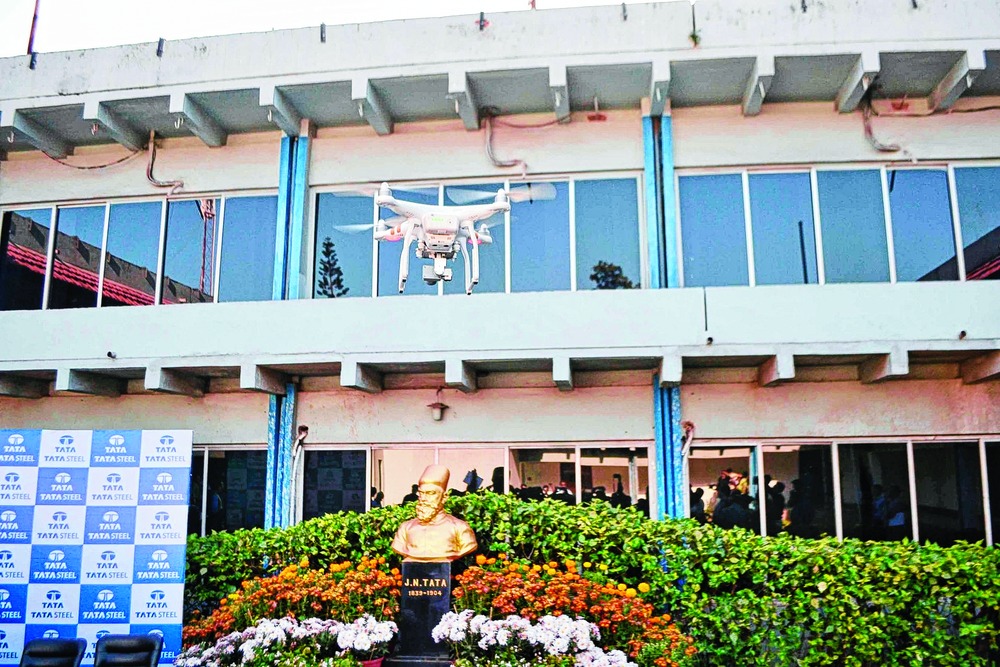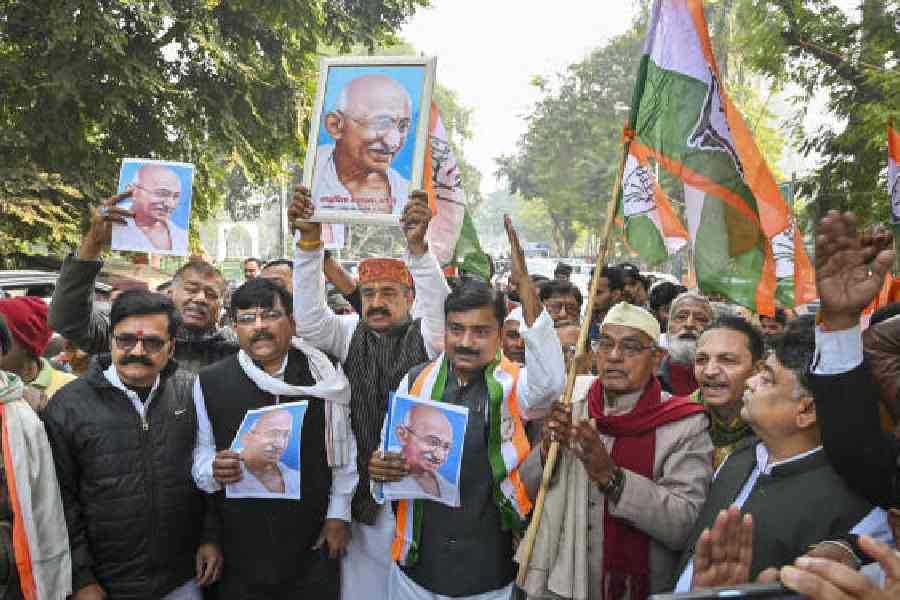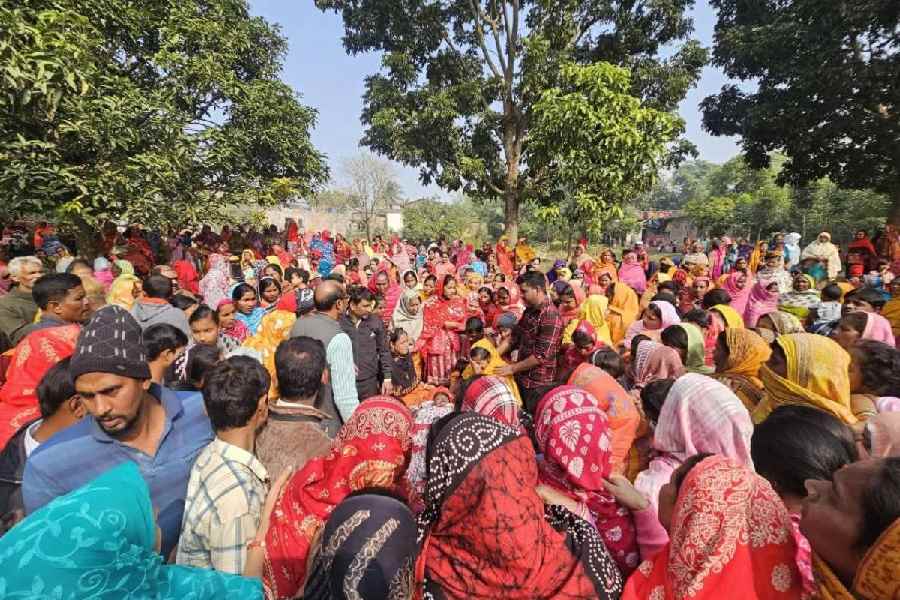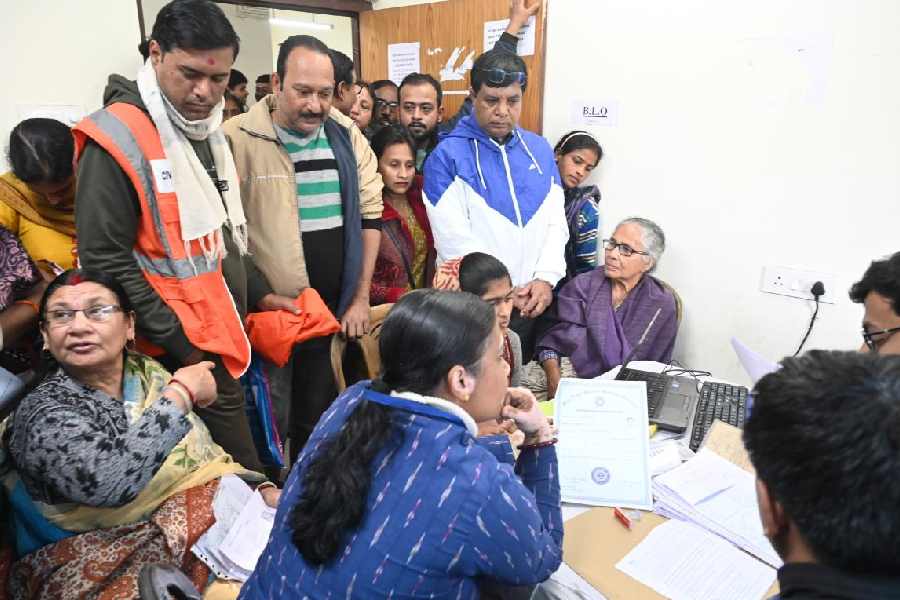Noamundi (West Singhbhum), Jan. 16: Drone surveillance for mining safety debuted in India today at Tata Steel's Noamundi iron ore mines in West Singhbhum, a sophisticated monitoring technology to alert authorities to subsidence and other threats and avert tragedies like the Lalmatia coal mine cave-in of December 29 that killed at least 18.
Union mines secretary Balvinder Kumar, who launched Drone Application in Mine Monitoring (DAMM) at Noamundi, some 160km from Jamshedpur, referred to the Lalmatia tragedy in Godda while enumerating the advantages of aerial surveillance.
Two remote-controlled drones, each of which work for nearly two hours at a go, are equipped with precision cameras with night vision. They can capture footage on whether the dug-up mine is stable or runs the risk of a cave-in.

"I discussed with Tata Steel authorities how through DAMM, footage on land movement and slope stability radar of mining walls can be captured. We will ask respective state governments, public sector units and private units to use DAMM as part of their mine surveillance system," the Union secretary said.
Tata Steel vice-president Rajeev Singhal added that drone camera footage could also reveal formation of benches, which occurs when a mine is excavated beyond its capacity and can collapse.
DAMM at Noamundi will survey the mining area, lease boundaries, safety zones, plantation in reclaimed area and quarries and dumps. Bangalore-based Skylark Drones, which conducted the pilot launch, claimed the drones had camera accuracy up to 3cm per pixel horizontally.
Stressing on mines safety, Union secretary Kumar said the government had also initiated mining surveillance systems using space technology and a mobile app to stop illegal mining, monitor mining plans, production, dispatch and royalty payment.
"The state government can use this technology to verify if production goes according to the mining plan or not," he said, referring to the mines surveillance system, a satellite-based monitoring system through remote-sensing technology, conceived by the mines ministry in October last year.
Asked whether drone surveillance could be used to detect rebel movement, considering most mines in West Singhbhum were in Maoist-hit areas, Union mines secretary Kumar said that was the state government's call.
Last year, 21 mining area leases were auctioned across the country worth Rs 94,000 crore of which three areas were in Jharkhand (a block in Tamar near Ranchi for gold mining and two blocks in Ramgarh for limestone), Kumar also said.
He said the mines ministry would form a central portal to monitor and check utilisation of funds under district mineral development foundation trust. The Mines and Minerals Development and Regulation (Amendment) Act, 2015, provides for the establishment of district mineral foundation trusts in districts. Units who got leases before 2015 would give 30 per cent royalty and units who got leases after 2015 would pay 10 per cent royalty to the trust to help people living in mining areas.
"The central portal will bring transparency in utilisation of funds from this trust meant to improve infrastructure in mining areas. It has come to our notice that few state government are using these funds according to their own will. Funds utilisation can be audited through this portal," Kumar said.










